
NESTLED in the northern Flinders Ranges, 60km north of Wilpena, Moolooloo Station is operated by third-generation owners Keith and Lesley Slade.
Like many working properties, Moolooloo supplements its grazing income by offering a range of farm-stay accommodation. Visitors can choose to get up close and personal with nature in an idyllic and remote bush campsite, where they might not see another soul for days. For those seeking something more substantial over their heads than canvas, the renovated shearers’ quarters near the homestead provide a more salubrious level of comfort and can cater for small groups.
For a couple who want to leave the kids at home for a few days, Moolooloo’s restored shepherd’s cottage, tucked away in a remote corner of this 60,000ha property, offers a more romantic option. Wired for power (via a generator) with a wood stove and wood-fired hot shower, the cottage offers a very special one-off experience not to be forgotten.
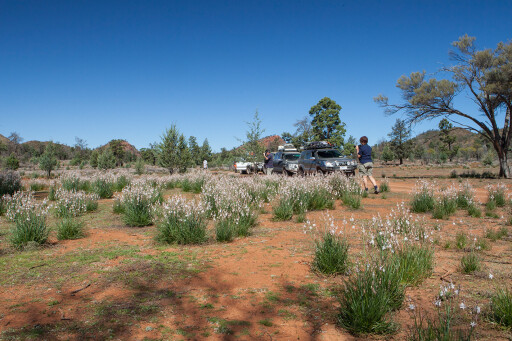
While Moolooloo’s homestead and adjacent shearers’ quarters are accessible by conventional vehicles and even large vans, a high-clearance 4x4 is required to explore the property further. The station sits on a South Australian peculiarity – a 4x4-only Public Access Route (PAR). A PAR allows the public a rite of passage over the track, but not to camp without the permission of the property owner.
Starting 13km east of Blinman, the PAR initially runs north-west, winding through stands of picturesque native pine that line the Artimore Creek valley. After significant rain, the landscape comes alive with new growth and is indescribably beautiful. For a brief time, grass forms a carpet of green beneath the ubiquitous native pines. Wattles burst into showy yellow blossom, while other native shrubs and wildflowers of blue and red punctuate the hillsides in a kaleidoscope of colour. This is normally a dry, arid landscape, and to see it lush and green with running water in its creeks and rivers is a rare and privileged experience.
The PAR is irregularly maintained by the SA Pastoral Board, and if the track hasn’t seen a grader for some time, expect to encounter numerous small washaways that make for slow going. On a positive note, this leisurely pace allows more time to appreciate the spectacular scenery. Some 15km from the main Wirrealpa-to-Blinman road, the track passes the ruins of Artimore Station, which is outside the boundary of Moolooloo and camping is permitted. At its peak, Artimore carried 40,000 sheep, however unreliable rainfall challenged its operations and in 1903, after the death of the then owner, the station was abandoned.
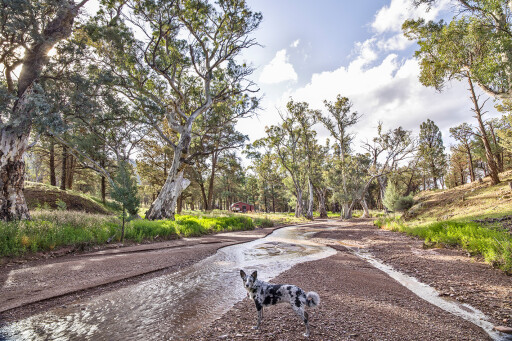
Both Moolooloo and Artimore were first settled in the 1850s, only a handful of years after SA was founded. In 1854, Moolooloo was surveyed by none other than the famous Australian explorer James McDouall Stuart, who in 1861 used the property as the starting point for his successful crossing of the continent from south to north.
Continuing on the PAR passes a side track to Patawarta Gap. While worth the drive, there’s nothing special to see along this short one-way track as it passes through country much the same as the main PAR.
Shortly past the Patawarta Gap turn-off the track reaches Hannigan’s Gap, which is marked by the long abandoned wreck of an old Ford ute that Moolooloo’s owners believe may have belonged to rabbit trappers in the first half of last century. Hannigan’s Gap was the site of the first settlement of Moolooloo in 1851, and the ruins of that original stone hut, now little more than a pile of rocks, lie nearby. A hard-to-find headstone marking the grave of Walter Gill, a pioneer squatter who died in 1858 while travelling from Warraweena to Port Augusta, lies in the grass near Hannigan’s Gap.
There are some idyllic bush campsites near Hannigan’s Gap which are highly recommended. All camping is by arrangement only and in any event you need a key to a locked gate to reach them. If it has rained and the creeks are running, you will be lulled to sleep by the sound of bubbling water. Even better, you won’t be kept awake by other campers because there aren’t any. Moolooloo’s owners ensure only one group of campers are in any designated campsite at one time, which makes life easier for everyone.
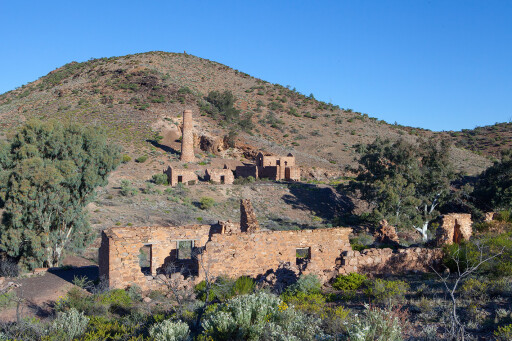
Moving on, the track descends into the wide, gravelly bed of Gap Creek, which cuts a narrow gorge through the range. Once through the Gap, the country opens up and the rugged red ranges give way to more gentle rolling hills for the last few kilometres to Moolooloo Homestead. Anyone not staying at Moolooloo can continue on to the station’s entrance gate, where a left turn leads to Blinman via Glass Gorge and a right turn to Parachilna Gorge and the main Blinman-to-Parachilna road.
Just before reaching Moolooloo’s entrance gate there is another PAR that runs 14km out to the site of the Nuccaleena Mine. Like all the station’s tracks this PAR receives only limited maintenance and needs to be negotiated with care. Close to Nuccaleena, the track follows the bed of a rocky, dry creek bed. Be aware that the point where the track leaves the creek can be hard to spot while concentrating on avoiding the gnarly river rocks. Miss the turn and 100 metres further the track seems to come to a perplexing dead end.
Copper was discovered on Moolooloo in 1857 and, while little remains of many of the mines dotted within the hills and ranges, Nuccaleena’s ruins are remarkably well-preserved given they have been abandoned for 150 years. Within 12 months of starting in 1860 some 88 men were working at Nuccaleena, and by the end of their second year of operation a small town had sprung up around the mine. As well as the prerequisite hotel to slake the miners’ thirst in this dry and dusty environment, there were substantial stone stables, a goods store, a blacksmiths workshop, a general store, a doctor’s surgery and 20 or so miner huts. Regrettably, the mine was hardly a financial success, spending £57,000 to produce only £13,000 of copper and, after losing what would have been a small fortune in the 1860s, it was abandoned after only six years.
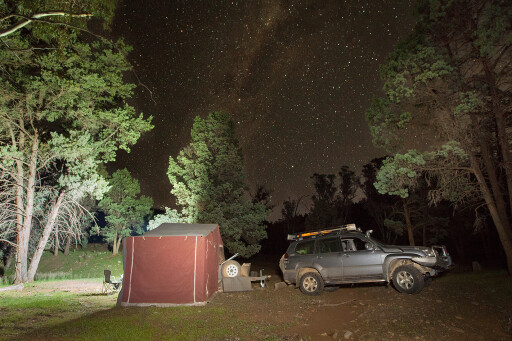
Moolooloo has another plus, being one of the few places like this where the family woofer can come along (subject to arrangement with the station owners). Unlike just about every other grazing property, Moolooloo makes only sparing use of 1080 poison baits. However, with the potential for emus and kangaroos to wander into your camp, anyone taking their dog must keep it in close check, preferably on a lead at all times and certainly not leave it loose to roam freely at night. With overnight temperatures regularly dropping to single digits, a canine hot water bottle can prove to be a handy camping accessory.
For anyone keen to explore the area further, some 20km to the north of Nuccaleena in the Warraweena Conservation Park are the Sliding Rock Mine ruins. The Copper Track is a one-way 4x4 track from Sliding Rock to Nuccaleena, which follows the route of an 1870’s road that connects the two mine sites with nearby Blinman. The track is rated easy to moderate, and you are greeted with great panoramic views along the way from Lake Torrens to Mount Samuel, the ABC Range and Wilpena Pound. Access is by way of a key (plus maps and handy track notes) that can be obtained at Warraweena, some 25km east of the historic town of Beltana. Anyone staying at Moolooloo can do a round trip by way of Parachilna (which, of course, means checking out the Prarie Hotel) and Beltana.
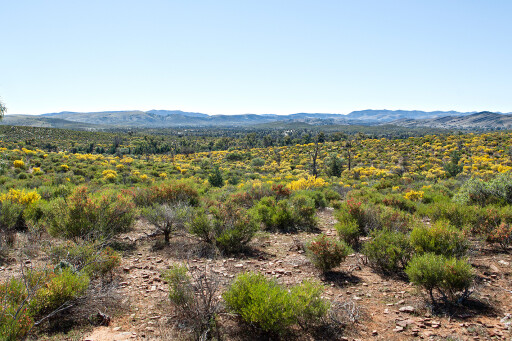
Moolooloo won’t disappoint as a 4x4 destination, with its PAR and other station tracks wandering through picturesque valleys of native pines bordered by red rocky ranges and rolling hills. Anyone wanting an intimate experience of the Flinders Ranges could do worse than load up the 4x4 (not forgetting the family woofer and accompanying luggage) and head to Moolooloo for a few days to enjoy its natural beauty.
TRAVEL PLANNER
WHERE
Moolooloo Station is located in South Australia’s Flinders Ranges, 20km north-west of Blinman and some 500km north of Adelaide.
WHEN TO TRAVEL
April to September offers the most pleasant conditions with daytime temperatures in the mid-20s, although single digits can be expected overnight. Summers are harsh and hot with temperatures often more than 40°C. In spring, a few weeks after significant rainfall, you can expect to see the station at its best with wildflowers and a carpet of fresh green growth.
SUPPLIES
Campers need to be totally self-sufficient with food and water. Fuel and some basic foodstuffs are available at Angorichina, 20km south of Moolooloo. Nearby Blinman doesn’t have fuel, but it does support a hotel and general store where the latter stocks a range of basic foodstuffs including frozen meat and bread.
ROAD CONDITIONS
The bitumen from the south ends at Blinman (or Parachilna in the west). The major gravel roads, including access to Moolooloo, are suitable for standard 2WD vehicles, vans and campers. The PAR and station tracks require a 4x4 with good clearance (ideally a high lift as well). However, in dry conditions, an experienced driver won’t face any major challenges towing an off-road, heavy duty camper.
MAPS
Good quality paper maps backed up with an off-road GPS (such as Hema) is recommended.
CONTACTS
Moolooloo Station
Phone: (08) 8648 4861 (Keith or Lesley Slade)
www.moolooloo.com.au
Warraweena Conservation Park
Ph: (08) 8675 2771 (Gina or Stoney Steiner)
www.warraweena.com.au
STAYING THERE
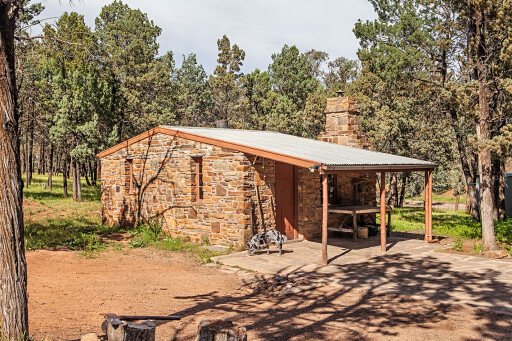
The shearers’ quarters on the banks of the picturesque Moolooloo Creek can accommodate up to 24 people. The shower and toilet block provides visitors with all the comforts of home, and the quarters feature a communal kitchen and dining room with 240V power provided courtesy of a generator. The entire complex can be booked for $150 to $200 a night (minimum of two nights). Individual room hire is $35 per person per night for a twin room, or $45 for a single room. Linen hire is $25 per bed.
Blinman Hut can be rented for $15 per person per night with a minimum of $70 (including $20 for the generator). Bush camping is available at a range of locations for $15 per vehicle per night. There are two campsites with long drop toilets, one of which also has a shower block (BYO shower bag) for $25 to $30 per vehicle per night. To ensure privacy, campsites are only rented to one group at a time.

COMMENTS